As the largest e-commerce market in the world, Amazon understands the true value of split testing. While sellers may never be able to read the minds of shoppers, split testing offers the next best thing with concrete data on how people think. It’s so useful that Amazon features its own split testing mechanics with Manage Your Experiments.
Manage Your Experiments, or MYE, does have its limitations. For starters, it’s only available to certain Amazon sellers and for certain items, not to mention it poses some small risks to your selling performance.
No doubt you have questions, so we’ve compiled this complete guide to Manage Your Experiments on Amazon and the latest updates. Let’s start with what it is, how it works, and who can use it.
What is Amazon’s Manage Your Experiments?
In a nutshell, Amazon MYE is a feature for Amazon sellers that lets you split test certain aspects of your product pages live on Amazon. It launched in 2019 as a means to test only A+ Content.
The big news for sellers: Amazon has updated its content variables to include testing of product images and titles as well.
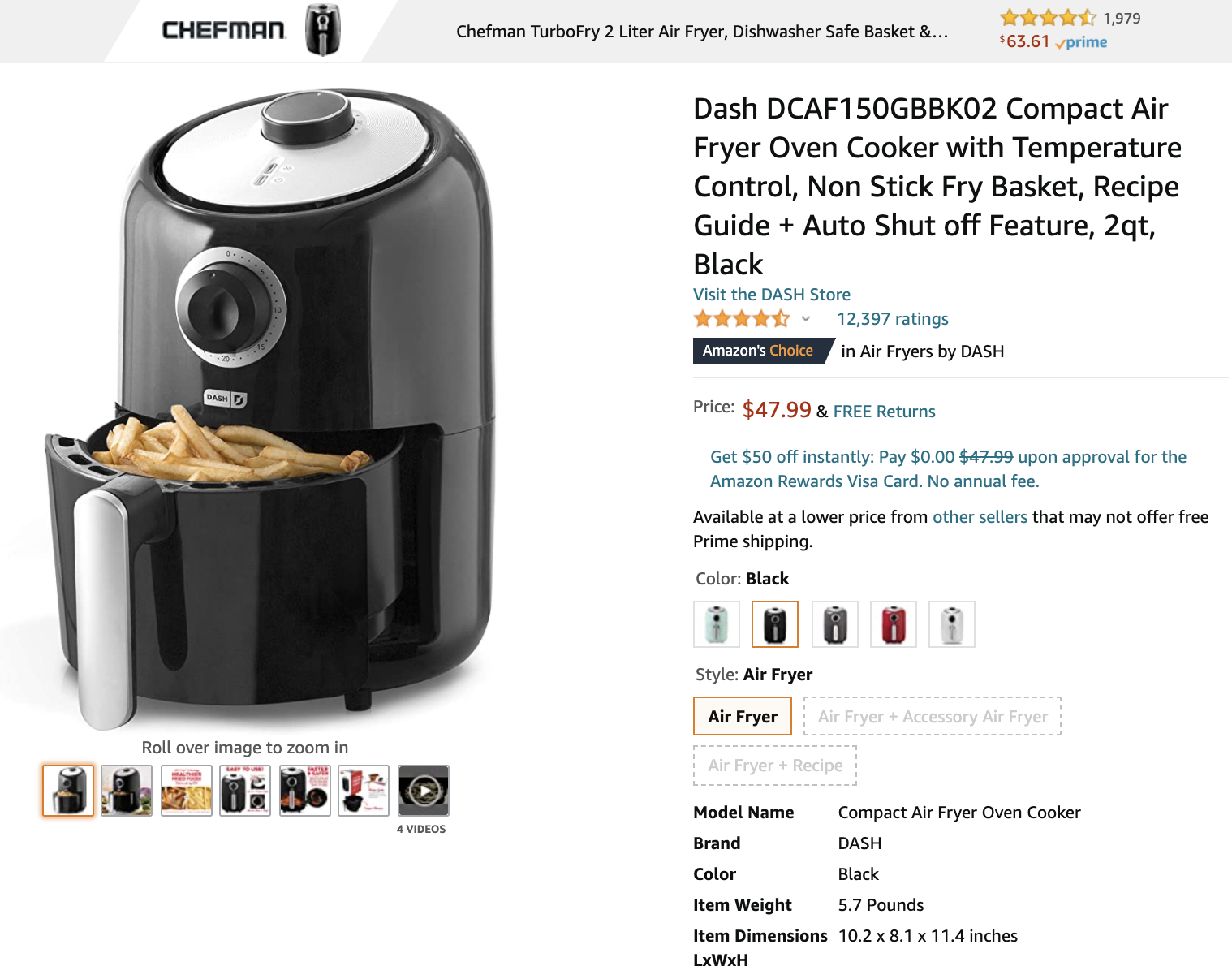
How PickFu complements MYE:
While Amazon MYE lets you test live on their marketplace, PickFu allows you to refine your creative elements before they even go live. By running a quick poll with a highly targeted audience, you can test product images, titles, and descriptions to ensure you’re working with your best-performing options right from the start.
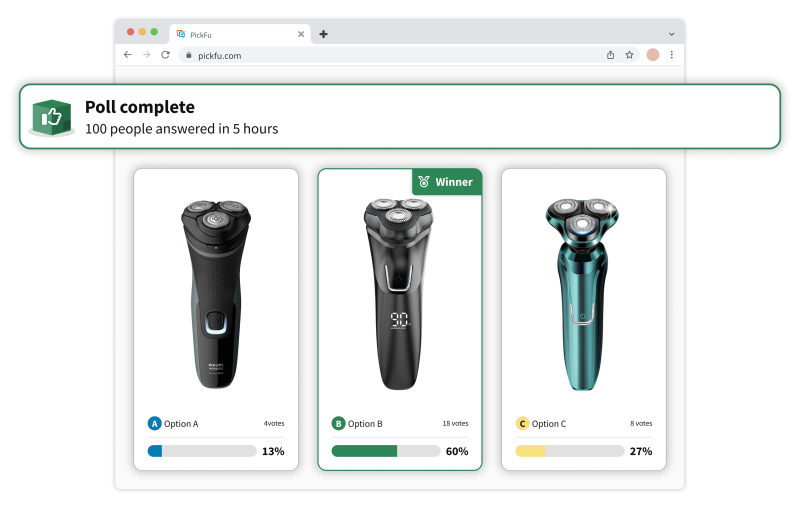
How does Amazon Manage Your Experiments work?
Manage Your Experiments split tests work just like any other. At random, half of visitors receive version A of an image, product title, or A+ Content, while the other half receives version B. Both variations are populated as normal on product pages, search results pages, etc., and supplant previous content, for better or worse.
Amazon recommends that sellers run an experiment for 10 weeks to get enough data. From there, a seller can see which version performs better.
Amazon MYE displays metrics for sales, conversion rates, units sold per unique visitor, and sample size. The data also shows a projected one-year impact, which forecasts sales and units sold if that version were used for a year.
Adding PickFu to your process can really speed things up
Waiting 10 weeks for Amazon MYE results can feel like an eternity when you’re looking for quick feedback. Not only that, but waiting for results will cost you. You are leaving money on the table every day your listing is not optimized.
With PickFu, you can test before you invest. Get actionable insights from your ideal audience in just minutes. Test different versions of your product images or titles to narrow down your options, then use Amazon MYE to validate your findings in a live environment.
Much of e-commerce hinges on shoppers’ momentary decisions. Split testing allows sellers to accurately optimize each and every detail, specifically the ones shoppers use when making decisions, such as product titles and images.
Amazon seeks to specialize this service by offering it exclusively within their marketplace. However, as we mentioned, not everyone is eligible.
Who can use Amazon Manage Your Experiments?
In Amazon’s own words, Manage Your Experiments is “only available in the U.S. for sellers who own a brand and are responsible for selling the brand in the Amazon store.”
The product you want to experiment on must be eligible as well. MYE only lets you test high-traffic products. Otherwise, you wouldn’t get enough data. What constitutes high traffic depends on the category.
How do I get started with Amazon A+ Content?
A+ Content lets brand owners customize the product descriptions of their items, with unique options for the layout and structure like a brand story, enhanced images, and the placement of text.
Just like Manage Your Experiments, Amazon A+ Content has particular rules about eligibility.
To be eligible for A+ Content, you must be a professional seller of your own brand, and that brand must be approved through Amazon Brand Registry.
Once you’ve met the criteria, you can manage your A+ Content from the Advertising menu on the Seller Central homepage.
Below is an example of A+ Content for OMG! Superfoods, a nutritional foods brand.
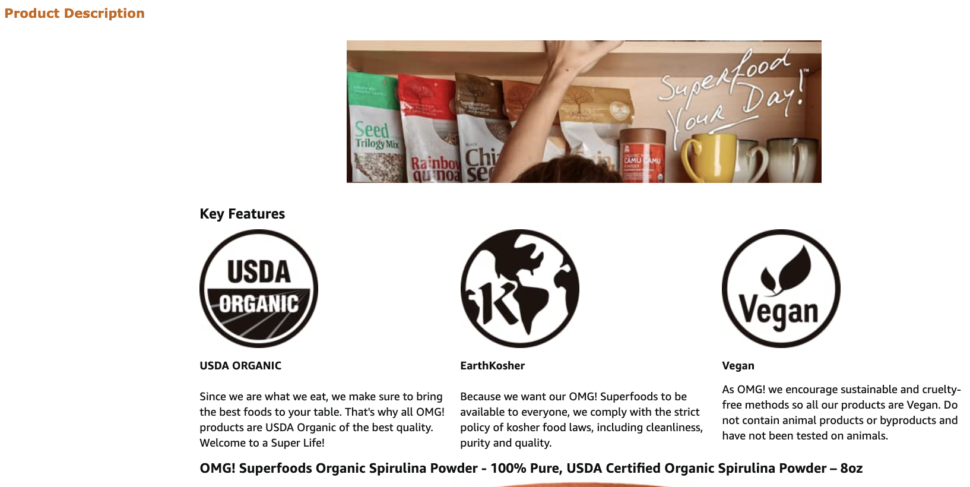
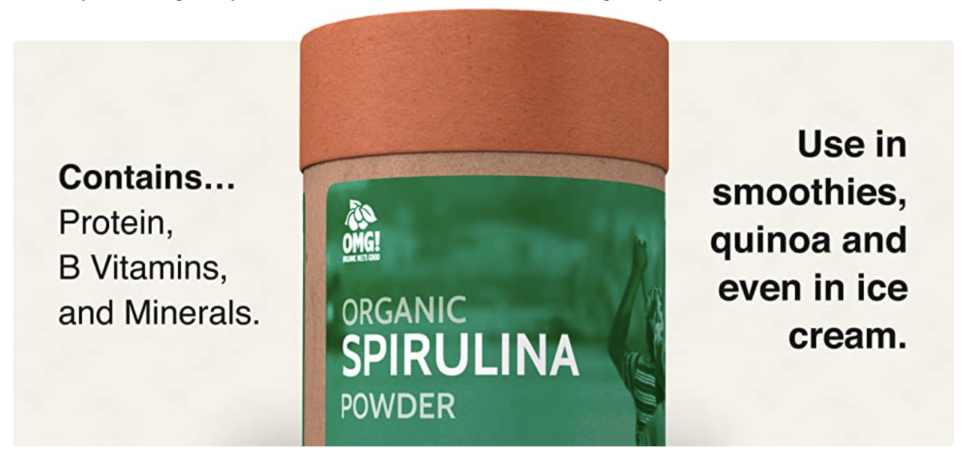
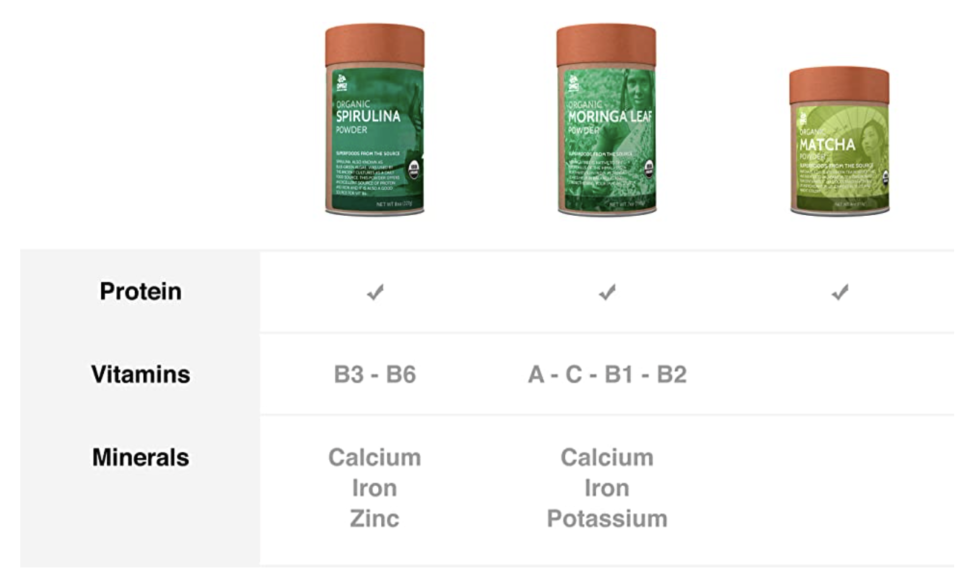
What are the pros and cons of Amazon A+ Content?
Check out the advantages and disadvantages of A+ Content to see if it’s right for you.
Pros
The obvious advantage of A+ Content is personalization. If your brand has a unique story or voice, including a mission statement or specific values, A+ Content lets you draw attention to them.
Even if you have nothing in particular to say about your brand, A+ Content is still worthwhile if you feel constrained by the usual rules and limitations of standard Amazon product descriptions.
Cons
The biggest drawback of A+ Content is that it’s not available to everyone.
Eligibility aside, the other disadvantage is you have to create your own content (as opposed to copying it from the manufacturer). If writing is not your forte, you can always hire a professional copywriter, but that depends entirely on your budget.
How do I get started with Amazon Manage Your Experiments?
Starting an experiment with Amazon MYE is fairly straightforward. Your first step is going to the Manage Your Experiments screen from your Seller Central dashboard.
When you’re ready, click the Create a New Experiment dropdown and select the type of experiment you want to run. Then, choose your Reference ASIN, the product you want to test. You’ll see which products are eligible and which are not.
After that, fill in the details of the experiment, including duration and start date, and provide the content for each variation. When you’re finished, submit the content for review.
Once Amazon validates it, the experiment will begin on the date you selected.
What are the pros and cons of Amazon Manage Your Experiments?
For all its benefits, Amazon MYE still has drawbacks to consider. Take a look at all the advantages and disadvantages before making a decision.
Pros
The biggest advantage of Manage Your Experiments is that it exists within the Amazon environment.
Other split tests are more like a simulation, whereas MYE is a live run. It works with real shoppers in real time in a real environment. This tends to produce more accurate data to manage your content on Amazon.
Cons
In a way, Amazon MYE’s greatest strength is also its weakness.
Because the testing is a live run, it means you can’t feature your normal content. Half of your users — real customers — will receive the inferior content. If you want to go out on a limb with this kind of testing, you risk ruining your reputation or scaring away potential customers, or at the very least losing a sale.
PickFu will let you test before you invest
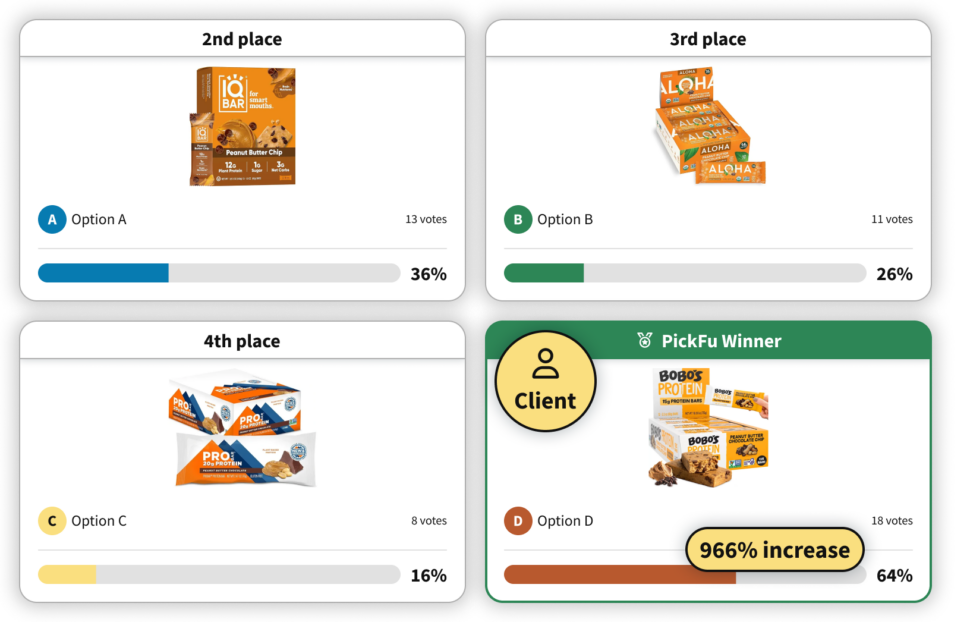
By using PickFu together with Amazon MYE, you can test bold or experimental ideas without impacting your live product pages.
Once you’ve validated your concepts on PickFu, you can confidently apply them to your MYE campaigns, knowing you’ve already vetted them with your target audience.
How to use Amazon MYE without losing sales
As mentioned above, experimenting live on Amazon is a double-edged sword. On the one hand, you test only your target customer group: Amazon shoppers who are already searching for your products.
On the other hand, for the duration of the experiment, half of your shoppers receive a suboptimal version of whatever you’re testing.
Why PickFu is the safer choice:
By running your split tests on PickFu first, you can perfect your content before showcasing it on Amazon. For example, if you’re testing product titles, use PickFu to identify the version that resonates most with your target audience.
Then, use Amazon MYE to confirm the data in real-world conditions without risking significant sales loss from an underperforming variation.
If you’re only testing a small detail, Amazon MYE won’t hurt your sales much. But split testing works best when experimenting on noticeable details, so the more ambitious your testing, the more it affects sales.
The workaround is to conduct split tests outside of Amazon. The problem then becomes how to find your target audience.
With PickFu, your audience is ready and available. You can opt to test with only people who shop on Amazon Prime, or you can target even more specific behavioral and psychographic segments.
Not only can you precisely hone in on your audience, but the process of split testing on PickFu is quicker and more accessible than Amazon MYE. Your results start coming in as soon as you publish your poll.
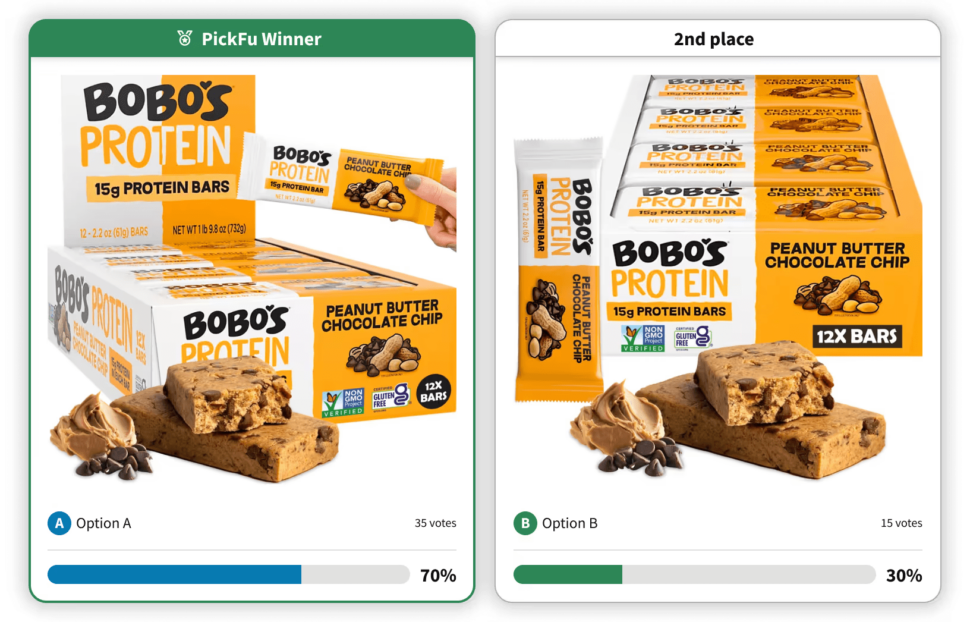
On top of that, PickFu offers some exclusive options that Amazon doesn’t. You can test additional content variables that Amazon MYE doesn’t offer, such as headlines, layouts, product packaging, and even your brand name.
If you don’t want to risk losing sales with an experimental product page — or if you’re not eligible for Amazon MYE in the first place — PickFu is the perfect alternative.
Or, use PickFu to complement your MYE campaigns. Test your listing and its individual elements on PickFu before going live on Amazon, and save the minor detail testing within the marketplace for after you launch.
Learn more about how PickFu compares to Manage Your Experiments. Happy testing!




